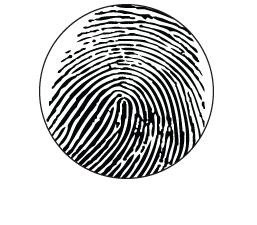Discipline Overview:
The science of fingerprints is grounded in the biological uniqueness and permanence of friction ridge skin found on the fingers, palms, and soles of the feet. These ridges form distinctive patterns during fetal development and remain unchanged throughout an individual’s lifetime. The arrangement of the friction ridge patterns to include their minute details, known as minutiae, create friction skin that unique to each person – even identical twins do not share the same fingerprints. This scientific basis supports the use of fingerprints as a reliable means of personal identification in forensic and security applications.
Latent print examination is a specialized forensic discipline focused on the detection, development and comparison of friction ridge arrangements. Latent prints are typically deposited through the natural oils and perspiration present on the skin that can be left behind when a surface is touched. Latent Print Examiners use a range of physical and chemical techniques to visualize and preserve these impressions for analysis. Latent print analysis is done through systematic methodologies to assess the quality and quantity of information of present or developed prints. Analysis may include comparing unknown latent prints to known fingerprint records or to entries in a database such as those in the automated fingerprint identification systems. Latent prints play a vital role in connecting individuals to crime scenes, verifying identities and supporting case evidence.

Latent Print Identification Subcommittee Chair
Committee Members
Return to Forensic Disciplines
Qualifications:
In the past, professionals in criminal justice often transitioned into latent print examination positions from roles such as police detectives, crime scene investigators, or tenprint examiners. While this pathway is still possible, today the majority of individuals entering the filed do so with a degree in forensic science or a related scientific discipline, reflecting the growing emphasis on specialized education and training in modern forensic laboratories.
Certification:
Standards:
The Organization of Scientific Area Committees for Forensic Science | NIST
Resources:
For more information about Latent Print Identification analysis:
